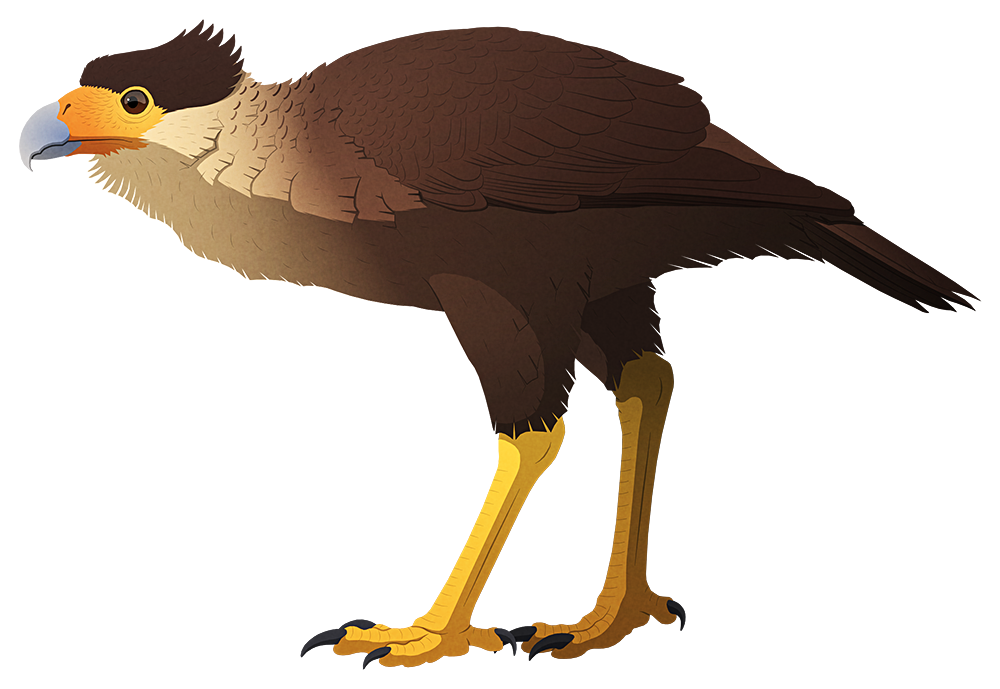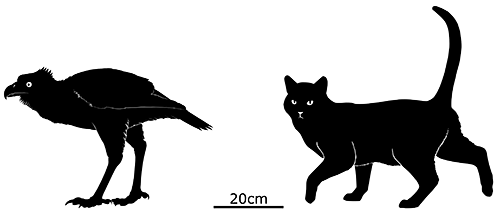The evolution of falcons is rather poorly understood. Thanks to genetic evidence we know that they’re closely related to seriemas, parrots, and passerines, but their fossil record is patchy and little is known about the early members of their lineage.
But a group knows as masillaraptorids are giving us a rare glimpse at what some early falconiforms were up to. Known from the Eocene of Europe, these long-legged predatory birds seem to have been caracara-like terrestrial hunters specializing in chasing down prey on foot – although their wings and tails indicate they were also still strong fliers.
Danielsraptor phorusrhacoides lived during the early Eocene, about 55 million years ago, in what is now eastern England. Although only known from partial remains, it was probably around 45-60cm long (~1’6″-2′), and it had a large hooked beak with a surprising amount of convergent similarity to those of the flightless South American terror birds.
Its mixture of falcon-like and seriema-like features may indicate that the common ancestor of both of these bird groups was a similar sort of leggy ground-hunting predator.



